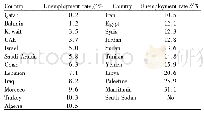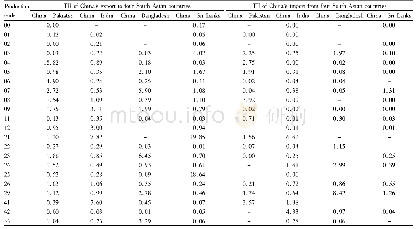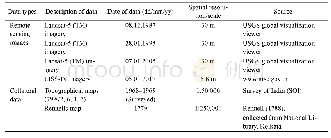《Table 2.Metrics for ENSO and the East Asian monsoon discussed in this study.》
 提示:宽带有限、当前游客访问压缩模式
提示:宽带有限、当前游客访问压缩模式
本系列图表出处文件名:随高清版一同展现
《Potential impacts of enhanced tropical cyclone activity on the El Nio–Southern Oscillation and East Asian monsoon in the mid-Piacenzian warm period》
*Estimated as the regional-averaged SST anomaly between the equatorial(5°S5°N)western Pacific(120°160°E)and eastern Pacific(140°80°W)Nio 3.4 region(5°S5°N;170120°W)Estimated as the regional-averaged meridional wind at 850 hP a ove
To compare the effect of TC-induced vertical mixing with that of the boundary conditions(e.g.,higher CO2concentration),we introduce an East Asian monsoon index defined as the regionally averaged meridional wind at 850 hPa over East Asia(Jiang et al.2013).It is shown in Table 2 that the East Asian summer monsoon is intensified in MP_mix.GL and MP_mix.CENP with respect to PI,but the change in monsoon intensity arising from enhanced vertical mixing(MP_mix.GL/MP_mix.NP minus MP)is larger than that caused by the PRISM3D boundary conditions(MP minus PI).This result indicates a dominant role of TC-induced vertical mixing in controlling the summer monsoon.In contrast,the East Asian winter monsoon is weaker in MP_mix.GL and MP_mix.NP relative to PI,though it is intensified compared to MP.This result indicates that the role of mid-Piacenzian boundary conditions overwhelms the effect of TC-induced mixing in the winter monsoon.
| 图表编号 | XD0049944800 严禁用于非法目的 |
|---|---|
| 绘制时间 | 2019.01.16 |
| 作者 | YAN Qing、ZHANG Zhongshi、ZHANG Ran |
| 绘制单位 | Nansen-Zhu International Research Centre, Institute of Atmospheric Physics, Chinese Academy of Sciences、Department of Atmospheric Science, School of Environmental Studies, China University of Geosciences、Bjerknes Center for Climate Research,Uni Research C |
| 更多格式 | 高清、无水印(增值服务) |
查看“Table 2.Metrics for ENSO and the East Asian monsoon discussed in this study.”的人还看了
-

- Table 3 The TII of agricultural products trade between China and four South Asian countries in 2006-2016





